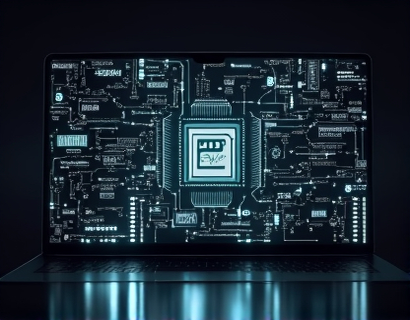Seamless DeFi Management: Introducing the Next-Gen Web3 Wallet for Crypto and Token Interaction
In the rapidly evolving landscape of decentralized finance, or DeFi, the need for a robust and user-friendly digital wallet has become paramount. Traditional methods of managing cryptocurrencies and tokens often involve cumbersome processes, multiple platforms, and a steep learning curve. This article delves into the features and benefits of a next-generation Web3 wallet, designed to revolutionize the way users interact with their digital assets. This innovative platform aims to provide a seamless, secure, and efficient solution for cryptocurrency enthusiasts and DeFi users alike.
Understanding the Challenges of Current DeFi Wallets
The current ecosystem of DeFi wallets, while diverse, often falls short in several key areas. Many wallets require users to manage multiple applications, each with its own interface and set of features, leading to a fragmented user experience. Security remains a top concern, with users frequently exposed to risks such as phishing attacks and smart contract vulnerabilities. Additionally, the complexity of navigating various blockchains and protocols can be daunting, especially for newcomers to the space. A next-gen Web3 wallet addresses these challenges head-on, offering a unified and streamlined approach to DeFi management.
Key Features of the Next-Gen Web3 Wallet
The next-generation Web3 wallet is built with a focus on simplicity, security, and functionality. Here are some of the standout features that set it apart from existing solutions:
- Unified Interface: The wallet provides a single, intuitive interface for managing all crypto assets and tokens. Whether it's Ethereum, Binance Smart Chain, Solana, or any other blockchain, users can access and interact with their assets from one place.
- Enhanced Security:
- Cross-Chain Compatibility:
- User-Friendly Design:
- Real-Time Market Data:
- Customizable Dashboard:
The wallet employs state-of-the-art security measures, including multi-factor authentication, cold storage for a majority of assets, and real-time threat detection. Smart contracts are audited by leading security firms to minimize the risk of vulnerabilities.
Users can seamlessly manage assets across multiple blockchains without the need for separate wallets. This cross-chain functionality ensures that users can take full advantage of decentralized opportunities regardless of the underlying blockchain.
The interface is designed with the user in mind, featuring a clean and intuitive layout. New users can easily onboard, while experienced DeFi participants will appreciate the advanced features and customization options.
Integrated market data provides users with up-to-the-minute information on asset prices, trading volumes, and other relevant metrics. This real-time data helps users make informed decisions and stay ahead in the fast-paced DeFi market.
Users can tailor their dashboard to display the information most relevant to them, whether it's portfolio overviews, transaction history, or market trends. This level of customization enhances the overall user experience and productivity.
Security Measures in Depth
Security is a non-negotiable aspect of any DeFi wallet. The next-gen Web3 wallet incorporates a multi-layered security approach to protect user assets:
Firstly, the wallet uses hardware-based cold storage for the majority of user funds, ensuring that a significant portion of assets is offline and less susceptible to cyber attacks. For assets held in hot storage, advanced encryption techniques are employed to safeguard against unauthorized access.
Multi-factor authentication (MFA) is mandatory for all account activities, adding an extra layer of security beyond just passwords. Users can choose from various MFA methods, including biometric authentication and security keys. The wallet also features real-time monitoring and anomaly detection, alerting users to any suspicious activity and providing tools to respond promptly.
Smart contracts powering the wallet are thoroughly audited by reputable security firms to identify and mitigate potential vulnerabilities. Regular security updates and patches ensure that the wallet remains resilient against emerging threats. Transactions are signed and verified using advanced cryptographic techniques, ensuring the integrity and authenticity of all operations.
User Experience and Accessibility
The next-gen Web3 wallet prioritizes a seamless user experience, making DeFi accessible to a broader audience:
First, the wallet is designed to be intuitive and user-friendly, with a focus on reducing the learning curve for new users. Step-by-step guides, tooltips, and a comprehensive help center are available to assist users at every stage of their DeFi journey.
For those who prefer a more hands-on approach, advanced users can customize their wallet to suit their specific needs. This includes setting up custom alerts, creating multi-signature transactions, and integrating with other DeFi protocols and applications.
Accessibility is another key consideration. The wallet is optimized for use on various devices, including desktops, tablets, and smartphones. A responsive design ensures that users can manage their assets smoothly, regardless of the device they are using. Additionally, the wallet supports multiple languages, making it accessible to a global user base.
Interoperability and Ecosystem Integration
Interoperability is a cornerstone of the next-gen Web3 wallet, enabling users to interact with a wide range of DeFi protocols and services:
The wallet supports a variety of blockchain networks, allowing users to manage assets across different ecosystems without the need for multiple wallets. This interoperability extends to popular DeFi platforms, exchanges, and yield farming protocols, providing a cohesive experience across the DeFi landscape.
Integration with non-DeFi services is also a key feature. Users can link their traditional financial accounts, enabling seamless transfers between fiat and crypto assets. This hybrid approach allows for a more flexible and comprehensive financial management solution.
The wallet also supports decentralized applications (dApps), allowing users to interact with games, lending platforms, and other DeFi services directly from the wallet interface. This integration not only simplifies the user experience but also enhances the overall value proposition of the wallet.
Case Studies and User Testimonials
To better understand the impact of the next-gen Web3 wallet, let's look at some real-world scenarios and user feedback:
A recent case study involved a seasoned DeFi trader who previously used multiple wallets to manage their assets across different blockchains. By switching to the next-gen Web3 wallet, this user reported a significant reduction in management complexity and an improvement in transaction speed. The unified interface and cross-chain compatibility allowed them to execute trades more efficiently, saving both time and resources.
Another user, a newcomer to DeFi, found the wallet's user-friendly design and comprehensive onboarding process invaluable. They were able to set up their wallet and start participating in DeFi protocols within hours, a process that would have taken much longer with traditional wallets. The real-time market data and customizable dashboard features helped them make informed investment decisions, leading to a positive return on their initial investment.
Feedback from the community highlights the wallet's security features as a major selling point. Users appreciate the peace of mind that comes with cold storage, multi-factor authentication, and regular security audits. The wallet's commitment to transparency, with open-source code and regular security updates, has further bolstered user trust.
Future Developments and Roadmap
The development team behind the next-gen Web3 wallet is committed to continuous improvement and innovation. Here's a glimpse into the upcoming features and enhancements:
1. Layer 2 Solutions Integration: Future updates will include support for layer 2 scaling solutions, such as Optimism and Polygon, to enhance transaction speed and reduce gas fees.
2. Enhanced Privacy Features: The wallet will introduce advanced privacy tools, including zero-knowledge proofs and confidential transactions, to protect user data and transactions.
3. Community Governance: A governance token will be launched, allowing users to participate in decision-making processes and shape the future of the wallet through voting mechanisms.
4. Expanded Asset Support: The wallet will continue to add support for new blockchains and tokens, ensuring that users can manage a growing portfolio of digital assets.
5. Partnerships and Collaborations: Strategic partnerships with DeFi protocols and fintech companies will be pursued to expand the wallet's ecosystem and offer users more value-added services.
Conclusion
The next-gen Web3 wallet represents a significant leap forward in DeFi management, addressing the key challenges faced by users today. With its unified interface, enhanced security, cross-chain compatibility, and user-friendly design, this wallet is poised to become an essential tool for both new and experienced DeFi participants. As the DeFi landscape continues to evolve, this wallet will adapt and innovate, ensuring that users can navigate the future of finance with confidence and ease.










































